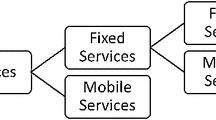Abstract
This article presents peer to peer systems for efficient traffic information dissemination and discovery as well as re-routing vehicles to lower travel time in urban environment. Both navigating the vehicles from the sparsest path and sending traffic packets from the paths with the highest density will turn a sparse path to one with congestion and, considering the limited capacity of the network, these packets will be dropped by the intermediate nodes. On the other hand, selecting multiple paths by means of peer to peer layer along with appropriately distributing the vehicles among the selected paths prevents vehicle congestion in various zones and appropriate distribution of the packets among zones with proper density instead of the highest one will stop their dropping by intermediate vehicles. All the same, establishing a peer to peer network on mobile nodes due to their high mobility will increase the overhead of creation and maintenance for the peer to peer network. Roadside unit (RSU) placement in appropriate locations as well as the creation of peer to peer networks on these nodes reduces peer to peer overheads; however, due to the considerable costs of RSU deployment and maintenance, creation of a peer to peer network on RSU would not be affordable. Therefore, this article tries to present a system that deploys a limited number of RSUs in the most appropriate places and uses them as super peer nodes, using vehicle nodes as peer to peer ones in other key intersections, not covered by the RSUs. Such a system reduces the high costs of RSUs’ deployment and maintenance; also lowering the high overhead of creation and maintenance of the peer to peer networks. Simulation results show the appropriate efficiency of the presented systems over the other related methods.






Similar content being viewed by others
References
Cookson, G. (2015). INRIX global traffic scorecard. INRIX research.
Patel, A., & Kaushik, P. (2018). Improving QoS of VANET using adaptive CCA range and transmission range both for intelligent transportation system. Wireless Personal Communications, 100(3), 1063–1098.
Tsao, S.-L., & Cheng, C.-M. (2011). Design and evaluation of a two-tier peer-to-peer traffic information system. IEEE Communications Magazine, 49(5), 165–172.
Chen, S., & Du, L. (2017). Simulation study of the impact of local real-time traffic information provision strategy in connected vehicle systems. International Journal of Transportation Science and Technology, 6(4), 229–239.
Seredynski, M., & Bouvry, P. (2011). A survey of vehicular-based cooperative traffic information systems. In 14th international IEEE conference on intelligent transportation systems, Washington.
Rybicki, J., Scheuermann, B., Koegel, M., & Mauve, M. (2009). PeerTIS: A peer-to-peer traffic information system. In Sixth ACM international workshop on Vehicular Internetworking, Beijing, China.
Cheng, C. M., & Tsao, S. L. (2015). Adaptive lookup protocol for two-tier VANET/P2P information retrieval services. IEEE Transactions on Vehicular Technology, 64(3), 1051–1064.
Jeonghee, C., Yeongwon, J., Hyunsun, P., & Soyoung, P. (2013). Intersection-priority based optimal RSU allocation for VANET. In Fifth international conference on ubiquitous and future networks, Da Nang, Vietnam.
Gao, Z., Chen, D., Yao, N., Lu, Z., & Chen, B. (2018). A novel problem model and solution scheme for roadside unit deployment problem in VANETs. Wireless Personal Communications, 98(1), 651–668.
Khan, M. A., Yeh, L., Zeitouni, K., & Borcea, C. (2017). MobiStore: A system for efficient mobile P2P data sharing. Peer-to-Peer Networking and Applications, 10(4), 910–924.
Pan, J., Popa, I., Zeitouni, K., & Borcea, C. (2013). Proactive vehicular traffic rerouting for lower travel time. IEEE Transactions on Vehicular Technology, 62(8), 3551–3568.
Sommer, C., Schmidt, A., Chen, Y., German, R., Koch, W., & Dressler, F. (2010). On the feasibility of UMTS-based traffic information systems. Ad Hoc Networks, 8(5), 506–517.
Collins, K., & Muntean, G. (2008). Route-based vehicular traffic management for wireless access in vehicular environments. In IEEE 68th vehicular technology conference, Calgary, Canada.
Dornbush, S., & Joshi, A. (2007). StreetSmart traffic: Discovering and disseminating automobile congestion using VANET’s. In IEEE 65th vehicular technology conference.
Nadeem, T., Dashtinezhad, S., Liao, C., & Iftode, L. (2004). TrafficView: Traffic data dissemination using car-to-car communication. ACM SIGMOBILE Mobile Computing and Communications Review, 8(3), 6–19.
Ebner, L., Wischoff, A., Rohling, H., & Lott, M. (2003). SOTIS: A self-organizing traffic information system. In The 57th IEEE semiannual vehicular technology conference.
Liu, C.-L., Wang, C.-Y., & Wei, H.-Y. (2010). Cross-layer mobile chord P2P protocol design for VANET. International Journal of Ad Hoc and Ubiquitous Computing, 6(3), 150–163.
Chawathe, Y., Ratnasamy, S., Breslau, L., Lanham, N., & Shenker, S. (2003). Making gnutella-like P2P systems scalable. In Proceedings of the 2003 conference on applications, technologies, architectures, and protocols for computer communications, Karlsruhe, Germany.
Lee, K., Le, M., Harri, J., & Gerla, M. (2008). LOUVRE: Landmark overlays for urban vehicular routing environments. In IEEE 68th vehicular technology conference, Calgary, BC.
Valibak, A., Fathy, M., Balouchzahi, N., & Akbari, A. (2014). A two-purpose peer-to-peer structure for vehicle navigating and traffic information disseminating in vehicular networks. In 2014 4th International eConference on computer and knowledge engineering (ICCKE), Mashhad, Iran.
Balouchzahi, N.-M., Fathy, M., & Akbari, A. (2016). An efficient infrastructure based service discovery in vehicular networks using P2P structures. The Journal of Supercomputing, 72(3), 1013–1034.
Pan, J., Popa, I. S., & Borcea, C. (2017). DIVERT: A distributed vehicular traffic re-routing system for congestion avoidance. IEEE Transactions on Mobile Computing, 16(1), 58–72.
Krajzewicz, D., Erdmann, J., Behrisch, M., & Bieker, L. (2012). Recent development and applications of SUMO: Simulation of urban mobility. International Journal On Advances in Systems and Measurements, 5(3), 128–138.
Available: http://www.omnetpp.org/ (Online).
Sommer, C., German, R., & Dressler, F. (2011). Bidirectionally coupled network and road traffic simulation for improved IVC analysis. IEEE Transactions on Mobile Computing, 10(1), 3–15.
Author information
Authors and Affiliations
Corresponding author
Additional information
Publisher's Note
Springer Nature remains neutral with regard to jurisdictional claims in published maps and institutional affiliations.
Rights and permissions
About this article
Cite this article
Balouchzahi, NM., Rajaei, M. Efficient Traffic Information Dissemination and Vehicle Navigation for Lower Travel Time in Urban Scenario Using Vehicular Networks. Wireless Pers Commun 106, 633–649 (2019). https://doi.org/10.1007/s11277-019-06183-7
Published:
Issue Date:
DOI: https://doi.org/10.1007/s11277-019-06183-7




